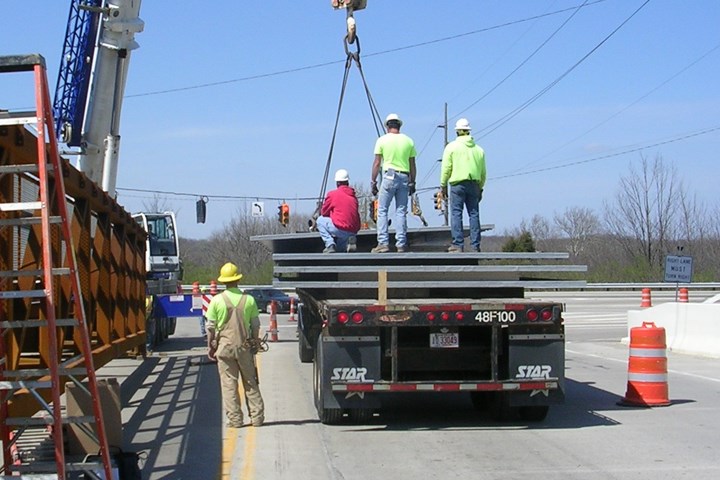FRP cantilever sidewalks help fill demand for wider sidewalks
According to Composite Advantage, physical distancing requirements have boosted demand for 15-foot sidewalks, presenting an opportunity for FRP panels.

Source | Composite Advantage
According to Composite Advantage (Dayton, Ohio, U.S.), physical distancing requirements within the U.S. have recently boosted demand for wider sidewalks, up to 15 feet wide. The company says its lightweight FiberSPAN-C fiber-reinforced polymer (FRP) cantilever sidewalk products are being used to fill this need.
Composite Advantage says that compared to reinforced concrete panels, its FRP panels are 80% lighter, and that because the cantilevered sidewalk is prefabricated, construction is quicker and installation costs lower. FRP composite material’s corrosion resistance to chemicals and water means zero maintenance for a structure that will last nearly 100 years.
“Cantilever sidewalk designs depend on a number of functional and load requirements,” says Scott Reeve, marketing director for Composite Advantage, now part of the Creative Composites Group. “One has to consider daily traffic volumes, whether or not the sidewalk will have to accommodate both pedestrians and cyclists and whether or not the sidewalk will be used to view special events.”
According to the company, Composite Advantage’s FRP sidewalks can be engineered and installed on both sides of a bridge to accommodate the ebb and flow of commuters, recreationists and bicyclists. FRP is able to support a pedestrian live load of 90 pounds per square feet. For sidewalks that are 7-10 feet wide, the panels are designed to support a maintenance vehicle weighing 10,000 pounds, and FRP sidewalks wider than 10 feet are said to be able to accommodate an ambulance weighing 20,000 pounds.
Related Content
-
CCG FRP panels rehabilitate historic Northamption Street Bridge
High-strength, composite molded, prefabricated panels solve weight problems for the heavily-trafficked bridge, providing cantilever sidewalks for wider shared use paths.
-
Novel composite technology replaces welded joints in tubular structures
The Tree Composites TC-joint replaces traditional welding in jacket foundations for offshore wind turbine generator applications, advancing the world’s quest for fast, sustainable energy deployment.
-
Composites reinvent infrastructure
Celebrating National Composites Week, CW shares ways in which composites continue to evolve the way we approach infrastructure projects.

.jpg;width=70;height=70;mode=crop)










